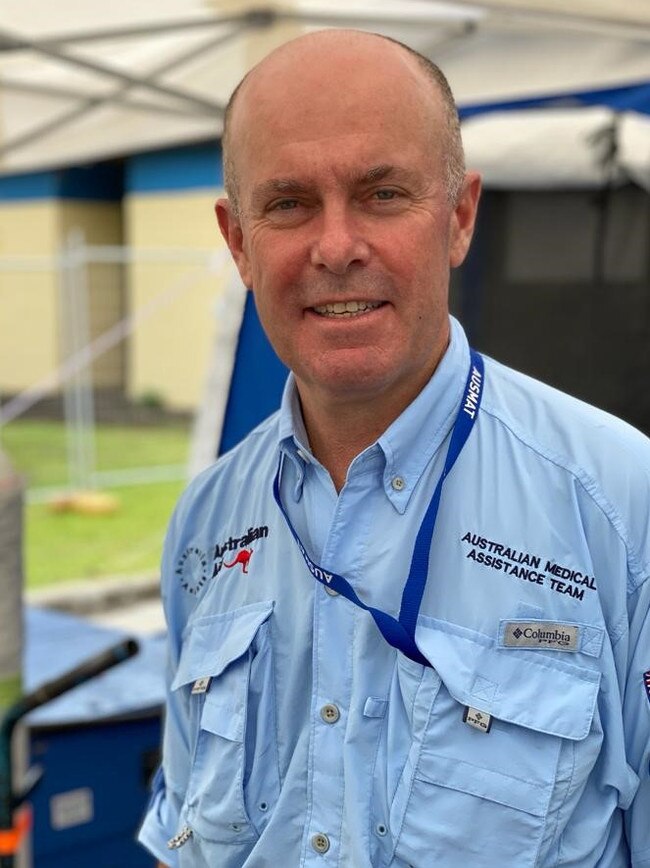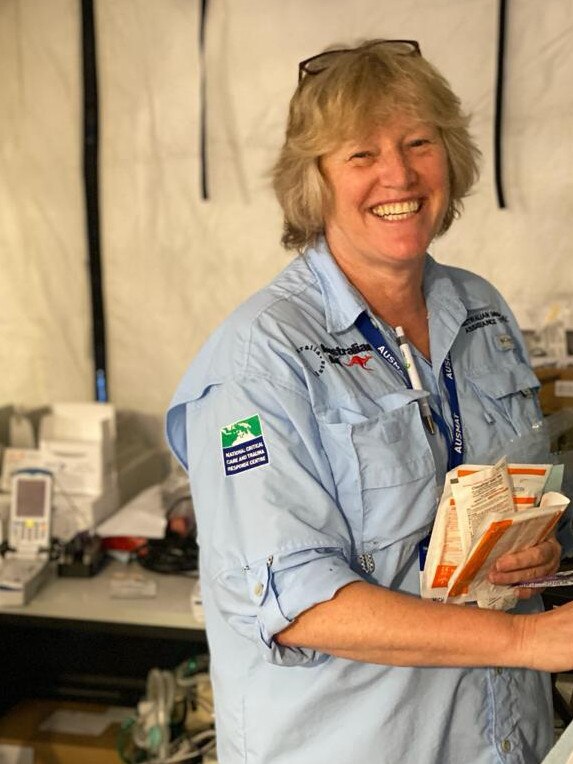Australian coronavirus medical team born in Bali tragedy
They’re the crack medical team protecting Australians from the spread of the deadly coronavirus. The Australian medical team on Christmas Island is used to working under extreme pressure in some of the toughest conditions imaginable.
Illness
Don't miss out on the headlines from Illness. Followed categories will be added to My News.
- Baby infected with coronavirus 30 hours after birth
- Coronavirus: What you must know about the deadly virus
They’ve fought disease in the Pacific, braved typhoons in the Philippines and treated flood-ravaged residents on the subcontinent.
Now they’re working overtime to stop the spread of the deadly coronavirus.
Meet Australia’s crack medical team – the brave health professionals and logistics officers who drop everything on a minute’s notice to help save lives when there’s a crisis in our region.
Born out of the 2002 Bali bombings, this group known as AUSMAT – the Australian Medical Assistance Team – have been called in to head Australia’s response to the coronavirus crisis.
Twenty-three AUSMAT members are based with evacuees at the Christmas Island detention centre while others have been sent on rescue flights to Wuhan.
But their feats over the past decade extend much further, providing crucial emergency medical care on the frontline at disease outbreaks and disasters – natural and man-made.
These dedicated professionals are trained to perform under the most challenging conditions.
“They have got to be psychologically prepared,” said Professor Len Notaras, the executive director of the National Critical Care and Trauma Response Centre which co-ordinates AUSMAT deployments.
“They have got to be psychologically robust and able to endure whatever’s thrown up.”
That preparation comes from a gruelling training regime that sees AUSMAT teams pushed to their limits during a week-long induction held in the stifling Darwin build-up.

Team members are forced to sleep in tents among the mosquitoes and placed in real-life scenarios dealing with conditions they might encounter in third world countries.
“The training isn’t about teaching the doctors or nurses the core skills all over again,” Professor Notaras said.
“What we are actually doing is taking those people and we are demonstrating for them what it’s like in an austere or alien environment.”
It’s held them in good stead as they’ve responded to natural disasters including the 2010 Pakistan floods, Typhoon Haiyan in the Philippines in 2013, and last year’s devastating Samoan measles outbreak.
The genesis for AUSMAT and the NCCTRC came in the wake of the 2002 Bali bombings when Professor Notaras convinced then Prime Minister John Howard to fly victims into the Royal Darwin Hospital.
By 2004 Mr Howard and Professor Notaras has developed plans for the trauma centre based in Darwin.

By the end of the decade there was a shipping container full of medical equipment based in the Top End, and in 2010 AUSMAT made its first deployment to the Pakistan floods.
Today that shipping container has grown into a brand new warehouse chocked with equipment including makeshift field hospitals – complete with operating theatres – that can be deployed in 24 hours.


But the key to AUSMAT’s success is its personnel.
Professor Notaras said the team is no place for the high-flying surgeon chasing flashing lights and sirens.
The AUSMAT ethos leaves little room for show ponies.
“It’s not glamorous by any stretch of the imagination,” Professor Notaras said.
“In Pakistan for example they were in temperatures of 49-50 degrees and living in little open tents.
“We are looking for people who have the right attitude … who are looking to actually make a difference.”

The team at Christmas Island is being led by Sunshine Coast anaesthetist Dan Holmes.
He said work at AUSMAT can be a bit like a lottery.
Dr Holmes starts every AUSMAT job by telling his workers that “this assignment is different from any we’ve ever done”.
“It’s ideal for the type of person that probably enjoys uncertainty and thinking on their feet,” he said.
“Being flexible and adaptable and working things out. And you get to work with other people like that. That’s one of the best parts of doing it.”


But the job can also leave its battle scars. Late last year Dr Holmes was sent to Samoa to help with the deadly measles outbreak.
Watching children die will shake the core of even the most experienced professional and most of those who died of measles were young kids.
“That was really confronting for most of the staff,” he said.

Dr Holmes said the challenge on Christmas Island is a different one. Here, the people they are dealing with are well but no risks are being taken.
Medical staff conducting daily observations and temperature checks wear personal protective equipment including full face masks.
“We’re going beyond what is absolutely necessary,” he said.
But the biggest challenge on Christmas Island is the logistics involved with managing more than 270 people in quarantine.
“This is not about our staff looking after sick people, it’s about screening people so they don’t become sick and managing the challenging logistics,” he said.
MORE NEWS:
Australian stabbed in Maldives terror attack
Taylor off the hook with AFP as PM shuffles cabinet
Australia’s sexiest careers revealed
Inside the plush village to house 3500 virus victims


“The main difference is that normally we’re at the pointy end, in other words people are unwell and that’s because they’ve been badly injured or because we’re going to a place where there’s a high level of disease
“Here we’re in a good facility, we’re not dealing with people who are sick, but we’re dealing with a lot of logistics.”
But on this occasion they’re also dealing with an incredible amount of public scrutiny. That’s something AUSMAT like to avoid, but you won’t hear them complain.
Professor Notaras said the hallmark of an AUSMAT member is the ability to role with the punches.
No fuss. No fanfare. “Just get on with the job.”
